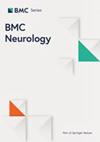Primary diffuse large B-cell lymphoma of the central nervous system identified with CSF biomarkers
IF 2.2
3区 医学
Q3 CLINICAL NEUROLOGY
引用次数: 0
Abstract
Diagnosis of primary diffuse large B-cell lymphoma of the central nervous system (PCNSL) is challenging and often delayed. MRI imaging, CSF cytology and flow cytometry have a low sensitivity and even brain biopsies can be misleading. We report three cases of PCNSL with various clinical presentation and radiological findings where the diagnosis was suggested by novel CSF biomarkers and subsequently confirmed by brain biopsy or autopsy. Case presentations. The first case is a 79-year-old man with severe neurocognitive dysfunction and static ataxia evolving over 5 months. Brain MRI revealed a nodular ventriculitis. An open brain biopsy was inconclusive. The second case is a 60-year-old woman with progressive sensory symptoms in all four limbs, evolving over 1 year. Brain and spinal MRI revealed asymmetric T2 hyperintensities of the corpus callosum, corona radiata and corticospinal tracts. The third case is a 72-year-old man recently diagnosed with primary vitreoretinal lymphoma of the right eye. A follow-up brain MRI performed 4 months after symptom onset revealed a T2 hyperintense fronto-sagittal lesion, with gadolinium uptake and perilesional edema. In all three cases, CSF flow cytometry and cytology were negative. Mutation analysis on the CSF (either by digital PCR or by next generation sequencing) identified the MYD88 L265P hotspot mutation in all three cases. A B-cell clonality study, performed in case 1 and 2, identified a monoclonal rearrangement of the immunoglobulin light chain lambda (IGL) and kappa (IGK) gene. CSF CXCL-13 and IL-10 levels were high in all three cases, and IL-10/IL-6 ratio was high in two. Diagnosis of PCNSL was later confirmed by autopsy in case 1, and by brain biopsy in case 2 and 3. Taken together, 5 CSF biomarkers (IL-10, IL-10/IL-6 ratio, CXCL13, MYD88 mutation and monoclonal IG gene rearrangements) were strongly indicative of a PCNSL. Using innovative CSF biomarkers can be sensitive and complementary to traditional CSF analysis and brain biopsy in the diagnosis of PCNSL, potentially allowing for earlier diagnosis and treatment.利用脑脊液生物标记物鉴定中枢神经系统原发性弥漫大B细胞淋巴瘤
中枢神经系统原发性弥漫大 B 细胞淋巴瘤(PCNSL)的诊断具有挑战性,而且往往会被延误。核磁共振成像、脑脊液细胞学和流式细胞术的灵敏度较低,甚至脑活检也会产生误导。我们报告了三例具有不同临床表现和放射学发现的 PCNSL 病例,这些病例的诊断是由新型 CSF 生物标记物提示的,随后通过脑活检或尸检得到确诊。病例介绍。第一个病例是一名79岁的男性,患有严重的神经认知功能障碍和静态共济失调,病程超过5个月。脑磁共振成像显示他患有结节性脑室炎。开放性脑活检未得出结论。第二个病例是一名 60 岁的妇女,四肢出现进行性感觉症状,病程超过 1 年。脑和脊髓 MRI 显示胼胝体、放射冠和皮质脊髓束出现不对称 T2 高密度。第三个病例是一名 72 岁的男性,最近被诊断为右眼原发性玻璃体视网膜淋巴瘤。症状出现 4 个月后进行的脑部磁共振成像随访显示,该病灶为 T2 超强前矢状病变,伴有钆摄取和周围水肿。所有三个病例的脑脊液流式细胞术和细胞学检查均为阴性。脑脊液突变分析(通过数字 PCR 或新一代测序)在所有三个病例中都发现了 MYD88 L265P 热点突变。在病例1和2中进行的B细胞克隆性研究发现,免疫球蛋白轻链λ(IGL)和卡帕(IGK)基因发生了单克隆重排。三个病例的 CSF CXCL-13 和 IL-10 水平都很高,其中两个病例的 IL-10/IL-6 比值也很高。后来,病例1通过尸检确诊为PCNSL,病例2和病例3通过脑活检确诊为PCNSL。综合来看,5种CSF生物标记物(IL-10、IL-10/IL-6比值、CXCL13、MYD88突变和单克隆IG基因重排)对PCNSL具有很强的提示作用。在PCNSL的诊断中,使用创新的CSF生物标记物可以提高灵敏度,并与传统的CSF分析和脑活检形成互补,从而有可能实现早期诊断和治疗。
本文章由计算机程序翻译,如有差异,请以英文原文为准。
求助全文
约1分钟内获得全文
求助全文
来源期刊

BMC Neurology
医学-临床神经学
CiteScore
4.20
自引率
0.00%
发文量
428
审稿时长
3-8 weeks
期刊介绍:
BMC Neurology is an open access, peer-reviewed journal that considers articles on all aspects of the prevention, diagnosis and management of neurological disorders, as well as related molecular genetics, pathophysiology, and epidemiology.
文献相关原料
| 公司名称 | 产品信息 | 采购帮参考价格 |
|---|
 求助内容:
求助内容: 应助结果提醒方式:
应助结果提醒方式:


